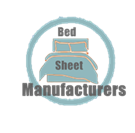Five factors affecting bed prices
The factors that affect the price of the bed are: material, quantity and density, weaving method, dyeing process and decoration process.
1. Materials, such as pure cotton, are the most widely used materials. Tianzhu cotton, Australian cotton, long-staple cotton, washed cotton, and knitted fabrics are actually pure cotton. The difference lies in the type of cotton (long-staple cotton) and the place of origin (Australian cotton). ), weaving method (knitted cotton, Tianzhu cotton) and further processing (washed cotton).
Cotton blended yarn has a refreshing and breathable texture and is suitable for summer use. It belongs to some high-end products of pure cotton.
White silk. It is a material developed by the British company Acordis using wood pulp fibers as raw materials. It has silky smooth luster, but at the same time takes into account the breathability of cotton, and is not as fragile as silk. It is a great choice for summer bedding.
silk. The most advanced material, the price is also the most expensive, but it is too brittle and easy to snag.
Polyester. This part is functional, such as milk velvet coral fleece in winter, and some are low-cost imitations or low-end bedding, such as cotton washed cotton.
2. Count & density
Simply put, it is a certain type of cotton. How many yarns are woven into it. For example, 32 yarns are 32 yarns, and 100 yarns are 100 yarns. Therefore, the higher the count of the woven fabric, the thinner the yarn, the thinner and smoother the woven fabric will be. And the density is the yarn density used for a square cloth, such as 128*68, 200*95, etc., which is the number of warp and weft, and the sum of the two numbers is the sum of high count and high density, which is greater than 180.
3. Weaving process
After the spinning is finished, we begin to weave. Everyone has heard of the weaving method of weaving.
Satin is a personal favorite, because of the exquisite luster brought by the weaving, it also has a soft touch, which is very intimate and textured~.
The visual perception after printing is also very advanced.
4. Coloring technology
A. Yarn-dyed.
It is the process of dyeing cotton first and then weaving. Pure cotton washed cotton represented by MUJI is basically a yarn-dyed process.
B. Printing.
This refers to the traditional printing method. More representative is the continuous repeating, relatively flat pattern, this kind of printing cost is lower, and the pattern is relatively monotonous and simple.
C. Digital printing.
Different from traditional printing, there are computerized pattern design software, the color patterns are richer, finer and stronger, more environmentally friendly, and the gradient is softer and more delicate.
D. Jacquard.
When the fabric is weaving, the pattern is formed by the change of the warp and weft structure. The pattern is relatively regular, mainly geometrical, and has a sense of order and beauty.
E. Embroidery.
This is the most common, but don’t think that there are such flowers, dragons and phoenixes in your mind. In fact, embroidery can be very young or very artistic.
5. Decoration technology
This part is the more value-added and icing on the cake. Additional craftsmanship can make the bedding more refined and advanced. .
Broad-sided strips, edging, and fancy decorative borders.
The bedding will combine a variety of techniques to make the finished product more exquisite, and of course the price will be higher.







